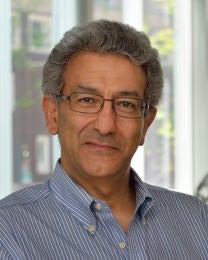Materials are often used to manipulate waves and fields. Metamaterials have provided far-reaching possibilities in achieving “extremes” in such wave-matter interaction. Various exciting functionalities have been achieved in exploiting metamaterials and metasurfaces in nanophotonics and nano-optics. We have been exploring how spatiotemporal metamaterials can give us new platforms in structuring light for exploiting waves to do certain useful functions for us. Several scenarios are being investigated in my group. As one scenario, we have been developing metastructure platforms that can perform analog computation, such as solving integral and differential equations and inverting matrices, with waves as waves interact with them. Such “metamaterial machines” can function as wave-based analog computing machines, suitable for micro- and nanoscale integration. Another scenario deals with 4-dimensional (4D) metamaterials, in which temporal variation of material parameters is added to the tools of spatial inhomogeneities for manipulating light-matter interaction with spatiotemporal platforms. These 4D structures can also be used for manipulation of diffusion to achieve asymmetric diffusion and trapping. The third category of structured waves is achieved in the near-zero-index materials and associated photonic doping that exhibit unique features in light-matter interaction, opening doors to exciting new wave-based and quantum optical features. In this talk, I will present some of our ongoing work in the above topics, and will forecast possible future research directions in these paradigms.

Nader Engheta is the H. Nedwill Ramsey Professor at the University of Pennsylvania in Philadelphia, with affiliations in the Departments of Electrical and Systems Engineering, Bioengineering, Materials Science and Engineering, and Physics and Astronomy. He received his BS degree from the University of Tehran, and his MS and Ph.D. degrees from Caltech.
He has received several awards for his research including the Isaac Newton Medal and Prize from the Institute of Physics (UK), Max Born Award from the Optical Society, Ellis Island Medal of Honor, the IEEE Pioneer Award in Nanotechnology, the Gold Medal from SPIE, the Balthasar van der Pol Gold Medal from the International Union of Radio Science (URSI), the William Streifer Scientific Achievement Award, induction to the Canadian Academy of Engineering as an International Fellow, the Fellow of US National Academy of Inventors (NAI), the IEEE Electromagnetics Award, the Vannevar Bush Faculty Fellowship Award from US Department of Defense, the Wheatstone Lecture in King’s College London, 2006 Scientific American Magazine 50 Leaders in Science and Technology, the Guggenheim Fellowship, and the IEEE Third Millennium Medal.
He is a Fellow of seven international scientific and technical organizations, i.e., IEEE, OSA, APS, MRS, SPIE, URSI, and AAAS. He has received the honorary doctoral degrees from the Aalto University in Finland in 2016, the University of Stuttgart, Germany in 2016, and Ukraine’s National Technical University Kharkov Polytechnic Institute in 2017.
His current research activities span a broad range of areas including photonics, metamaterials, electrodynamics, nano-optics, graphene photonics, imaging and sensing inspired by eyes of animal species, microwave and optical antennas, and physics and engineering of fields and waves.

